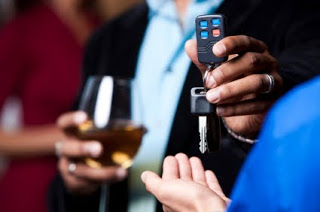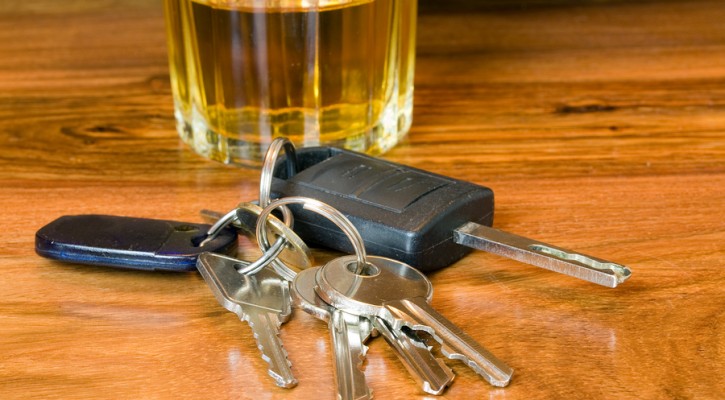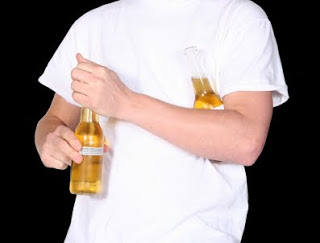Tag Archive: underage drinking

Parents Are Aware Of Alcohol Use At Teen Parties
December 17, 2014
A new study shows that most parents are aware of alcohol use at teen parties hosted in their homes. This disturbing fact came to light in a study printed in The Journal of Primary Prevention. The researchers gathered their data through phone interviews of 1,121 teens in 50 mid-size California cities over a two year period.
The good news from the study is that most of the teens interviewed hadn’t hosted a party where alcohol was used. However, among those that had hosted a party during the previous twelve months, thirty nine percent reported that there was alcohol at their last party. The alcohol was supplied by multiple sources. Continue Reading

Social Host Liability Laws
December 29, 2011
As the New Year approaches and parties are being planned, hosts should be aware of their liabilities and responsibilities when it comes to serving alcohol.
Every state has some form of a little known law known as Social Host Liability Laws. Most of these laws are sub-chapters of “Dram Shop” laws. Dram shop laws are those laws that set out the responsibilities and liabilities for businesses such as bars and restaurants that regularly serve alcohol. Social Host laws however refer to the responsibilities and liabilities for a home owner or party host.
In most states the Social Host laws refer primarily to a homeowner who knowingly serves alcohol to a minor. While most responsible adults would never consider serving alcohol to a minor, a surprising number of adults either actively serve alcohol at parties attended by minors or turn a blind eye when their teens are hosting a party where alcohol is served. A recent article in the Brockton, MA Enterprise cited a survey conducted by Hingham High School where students were asked if they had attended parties where parents allowed teens to drink. More than 25 percent of freshmen and juniors at the school answered that they had attended such parties – an increase of 30 percent since 2008. A similar study at seven schools in Concord MA revealed that 27 percent of the students had attended parties where parents allowed teens to drink.
Social Host laws also hold parents criminally responsible even if they were unaware that the teens had sneaked the alcohol in. A Stanford professor who recently hosted a party for his son and friends specifically stated that no alcohol was allowed. Apparently, without the professor’s knowledge, some of the teens brought alcohol to the party and police showed up around 11:00 pm to investigate. The professor was charged with 44 counts of contributing to the delinquency of a minor – one for each teen at the party.
While there are separate laws concerning supplying alcohol to a minor, Social Host laws go further and hold the host both criminally and civilly liable if one of their guests causes injury to a third party. Some Social Host laws also prohibit serving alcohol to someone – teen or adult – who has a known drinking problem. Other states hold the host liable if they provide keys to an intoxicated adult who went on to injure a third party in a collision.
Parents who have the idea that they would rather have their kids drinking “safely” at home rather than out on the street need to remember their responsibility to be “Be A Parent, Not A Pal.” For hosts of adults, they should also be aware of their responsibilities and remember that old adage: “Friends Don”t Let Friends Drive Drunk.”To prevent one of your guests from leaving a party while intoxicated, a host has several options:
- Take the car keys from your guests as they enter and plan on them spending the night.
- Call a cab for your guests.
- Be aware of services provided by cab and towing companies or public transportation agencies that provide free or low cost rides on New Year’s Eve.
- Be a really good host, remain sober and be the designated driver for your guests.
For more information on Social Host laws in your state, visit: http://www.socialhostliability.org/
Have a safe and a happy New Year.

Preventing Underage Drinking and Driving
November 22, 2010
Underage drinking should and does pose concern for parents. Combine drinking with teens who are receiving their learner’s permits or full operators license and you have a recipe for disaster.
For parents and guardians, it will be up to them to make sure that they set the parameters and guidelines to keep their teens safe at all times. But doing so without imposing too much control and giving away too much freedom is essential. Otherwise, teens may make the wrong choices when faced with decisions, they may soon regret.
So what can be done? What can be done to help a teen from getting into preventable bad situations?
There are a few steps parents can take, including:
Get to know the parents of the teen’s friends – Acquaint yourself with the parents of your teen’s friends. Make sure you are on the same wavelength when it comes to what your expectations and parameters are for your teen. Also, treating your teen’s friends with respect or as if they are family will make them think twice before trying something irresponsible. If another parent isn’t too concerned about underage drinking, put out facts. Never argue, instead, share your concerns and the reason you have them, along with the facts and statistics on underage drinking and how it affects the teenage brain. Once they understand the science and statistics, hopefully they will change their minds.
Hide/Lock up the alcohol – Remember, out of sight, out of mind. Don’t make it easy for them to find alcohol and be irresponsible. Ask the parents of your teen’s friends to do the same. Homeowners and other adults can be held liable for what occurs in their home whether they were present or not. Be prudent and not an enabler for reckless teen behavior.
Be the example for them to follow – Be consistent in your message. Never break the rules you make or take part in illegal, unhealthy or dangerous substances or activities. Your actions are the most powerful message to your teen of what is acceptable in your family.
Limit teen driving times and vehicle access – Create and follow a parent-teen contract. Give them limits as to when they can drive a vehicle and how often they can use it. Check in often with your teen. Be sure you know how to reach them. Know where they’re going and ask whether anyone will have alcohol and if adults will be present.
Support the law – Most of the underage drinking laws have made bars and liquor establishments responsible for whatever damages an underage customer might do or incur. They are also likely to have their licenses for selling revoked, if proven to be selling to minors or someone with fake ids. Law enforcement is also cracking down on the makers of fake ids, and violators are given harsh penalties if proven guilty.
Install an anti-distracted driving mobile application – Most of these apps are designed to combat distracted driving, but they can also be used to set safe driving zones, and can alert you if a teen is going over a certain pre-approved point, like, say, a bar or known trouble area. It could also help prevent your teen from getting into a distracted driving crash.
Talk to your teen – Have a straight-up conversation about the effects of drinking and the dangers of drinking and driving. Make sure they understand the penalties, how it reflects on their legal and driving records and how that might affect them in the future. Tell them of your family’s history of alcohol and drug use, since there is a genetic predisposition towards risk of addiction. Be alert and ready to talk with your teen, when they come in at night. Ask them about how their evening went and be prepared to tackle what they share with you. Having an open conversation and understanding with teens can often do wonders for both the teen’s safety and their relationship with their parents.
Recognize and praise them when they have been responsible and demonstrated good judgment. Together with other concerned parents, many crashes that happen during the teenage years can be prevented. Be concerned and vigilant, but not overprotective. Teen drivers may seem like they are maturing to adulthood, but they are not quite there. Balancing expectations with responsibility and implementing precautions, will help to avoid the dangers of underage drinking and drinking and driving.
Learn more about Technology to Prevent Drunk Driving at the National Safety Commission.

How to Deal with Underage Drinking: Tips for Parents
September 15, 2009
Restricting your teen’s access to alcohol is one of the most important things you can do for them as a parent. There are highly-publicized risks of fatal alcohol poisonings and devastating motor vehicle crashes due to drinking and driving, for example. But there are other, less-publicized risks that could be equally destructive to your teen’s health and well-being, such as increased risk of sexually transmitted diseases and unintended pregnancy, violence and rape, and suicide.
Of course, underage alcohol use has consequences other than legal ramifications:
- Early alcohol use, independent of other risk factors, strongly predicts the development of alcohol dependence. Of all people who ever meet the diagnostic criteria for alcohol dependence in their lifetime, nearly half do so by age 21 and two-thirds by age 25.
- Due to differences between the adult brain and the brain of the maturing adolescent, many young drinkers:
- Are able to consume much larger amounts of alcohol than adults before experiencing the negative consequences of drinking, such as drowsiness, lack of coordination, and withdrawal/hangover effects.
- Are particularly sensitive to the positive effects of drinking, such as feeling more at ease in social situations; young people may drink more than adults because of these positive social experiences (NIAAA, 2009).
- Recent evidence suggests adolescent drinking can inflict permanent damage on the developing brain (National Research Council and Institute of Medicine, 2004).
To help your teen avoid the use of alcohol and its attendant problems, maintain an ongoing, open dialogue about underage drinking and the risks involved. Make sure she understands that underage drinking is never acceptable. The fact that she is at a party or it is a special occasion or that some parents might “look the other way” when their teenage children drink alcohol does not change the fact that underage drinking is illegal and very dangerous. If your teen is attending a party at a friend’s house, make sure her friends’ parents don’t intend to provide alcohol; this is illegal in every state. You might be surprised to discover that other parents plan to provide their teens and their friends with alcohol in a “safe” manner and location. Make sure your teen understands that other adults can’t give her permission to drink alcohol. An alternative is to talk to your teen about organizing a get-together at your own home.
If you and your teen decide to host a party, make a guest list with your teen. Limit the number of teens so you can be sure of adequate chaperonage. Be sure you have contact information on each teen’s parent. Make sure guests and their parents understand that if a teen leaves the party, he won’t be allowed to return and parents will be called. Make sure parents who won’t be chaperoning know the start and end times of the party and will prearrange transportation. Collect all keys so you can keep track of who is arriving and leaving. Keep coats and purses in an area that can be monitored. Speak to each person before he leaves; check for warning signs of impairment. If a guest arrives at the party already under the influence of alcohol or other drugs, keep him there while you call a parent to pick him up. If he leaves and someone is hurt or injured, you could be held responsible.
When your teen spends the night at a friend’s house or goes to a party, call the hosting parent to find out the details. Make sure the hosting parent shares your concerns about the availability of alcohol and that none will be permitted. Ask how much supervision will be provided. Volunteer to chaperone and provide transportation. Let your teen know that you will not approve any outing without sufficient notice so you can speak to the hosting parent first. If your teen will be riding anywhere, at any time, with a friend, make sure it is with someone whose parents do not permit the use of alcohol. Teens are at great risk when riding with other teens, even under the best of circumstances. Talk to your teen about a back-up plan in case something goes wrong.
When your teen is going out for a special event, have her make a record of the planned itinerary for the evening and make sure she agrees to inform you of any changes. Be alert to spontaneous changes in plans on the night of the event; your teen won’t have as much control over the situation if it takes place in an unfamiliar location and/or with people she doesn’t know well. In the excitement of the evening, she could end up in a risky situation before she realizes what is happening.
Create a code with your teen so he can signal for help without attracting the attention of friends. If you don’t know how to text, ask your teen to give you a few lessons; texting is a much easier way for you to communicate than via phone. When you arrive to pick up your teen, he can blame you for having to leave or you can give the excuse of a “family emergency.” Make an agreement that if you do have to pick him up, a discussion about the reason can be tabled until the next morning, when you and your teen are both calm and safe. Otherwise, your teen may avoid calling you for help because he doesn’t want you to know about the circumstances that required the ride home.
And, last but certainly not least, realize that your teen is vulnerable to making poor choices every day. Don’t let your guard down. Finding a balance between being too controlling and allowing too much freedom will require constant effort, but it is a worthwhile endeavor. Your teen’s health and happiness may depend on it.
How Active Participation Helps Teens Understand Safe Driving Concepts
August 4, 2009
Most adults understand that teens tend to tune out long lectures about safe driving (or anything else), but parents and teachers also know that they have important messages to pass on, and they are sometimes at a loss as to other methods of doing so. Creative thinking in terms of teaching methods, both in the home and at school, can mean the difference between messages that teens will ignore versus those they will integrate into their driving behavior. This is so important with driving; motor vehicle crashes are the leading cause of death for teens in the United States, according to the National Highway Traffic Safety Administration. Obviously, lectures aren’t working.
Recently, First Coast News of Jacksonville, FL profiled four teenagers who had created a Public Service Announcement (PSA) to promote safe driving. The PSA shows a teen driving while listening to music, eating, and using a cell phone to talk and text; she eventually glances at the road just in time to see that it’s too late to avoid a motor vehicle crash.
Reporters quizzed the teens on whether or not they’d ever performed any of these unsafe driving behaviors. The teens admitted to doing so but also said that making the PSA had heightened their awareness of how dangerous these behaviors are, which had caused them to curb the behavior. The teens said that creating the PSA had made the consequences of distracted driving, such as getting into a crash and being seriously injured, seem real. This is more of an accomplishment than one might think; teens’ brains are not biologically developed enough for them to control impulses and understand the consequences of their behavior, which is why convincing them to drive safely is such an uphill battle.
Another benefit of this type of active participation is that these teens became positive role models for their peers, influencing them to drive more safely. Peer pressure is a reality that must not be ignored; many teens perform more (both in intensity and in number) risky driving behaviors when they are accompanied by teen passengers. Whether the teen driver is bowing to external pressure from friends or internal pressure to show off, the effect is the same. The key is not to try to convince teens to disregard peer pressure, an almost impossible task, but to convert the peer pressure into a positive influence.
Making the PSA also had the effect of helping these teens take responsibility for their driving behavior. Again, this is typically a difficult task. Teens have a variety of sources, legitimate and irrational, to blame for their poor choices; reaching maturity means accepting responsibility for their decisions and the attendant consequences, along with realizing that they are the ones who make the ultimate decision to be safe drivers.
Listening to a lecture is a passive process; making a PSA is an active process because it forces the teen to engage with and think about safe driving concepts. Of course, having every teen in America make a PSA about safe driving would be a logistical nightmare, and due to teens’ short attention spans, the experience would soon wear thin. But the concept of having teens participate in an active learning process about safe driving could be utilized in every household and in every school.
Before assigning an active-participation project to teens, consider their interests. Most teens love music, popular television shows, being with friends, and talking about themselves. Most teens are self-conscious about their appearance and are interested in grooming, clothes, and accessories. Many teens also have a special hobby, such as gaming, art, computers, writing, or sports. Many are also interested in exploring new ideas – the perfect time to let them get creative with how to disseminate safe driving messages. Ideas include:
- Designing a poster or series of posters
- Writing a song, using computer software to write accompanying music
- Writing an episode of their favorite television show
- Performing a skit with friends
- Giving their own “presidential address”
- Designing a clothing/accessory line
- Creating a video game
To avoid boredom, vary the topics assigned to the teen, but for maximum benefit, assign topics that relate to common teen driving mistakes, such as:
- Drinking and driving
- Drugs and driving (focus on common drugs of abuse for teens, such as cough medicine, prescription drugs, inhalants, and marijuana)
- Wearing safety belts
- Speeding
- Reckless driving, such as weaving in and out of traffic
- Aggressive driving, such as tailgating
- Distracted driving, such as cell phone use
- Driving with passengers
To further engage their critical thinking skills, have teens present their messages from other points of view. For example, teens who are interested in politics can give a presidential address about enacting laws to lower teen deaths in motor vehicle crashes; teens who are interested in sports can create an advertising campaign showing how drinking and drugs can impair athletic ability. Until the project is finished, try to provide encouragement and support without too much assistance; let teens follow the research and learning process to its logical conclusion.
Helping teens engage in an active learning process regarding safe driving behavior is a requirement for reducing the teen death rate on our nation’s roadways.
